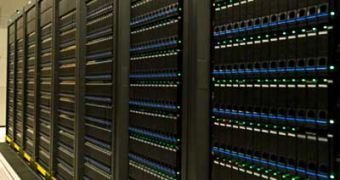The 32nd TOP500 list of the world's fastest supercomputers has been recently released, unveiling the fact that IBM's Roadrunner has managed to hold on to its leading position, while the newly announced Cray XT5 supercomputer, called Jaguar, only placed second. Even so, the machine located at the Oak Ridge National Laboratory, the second to bring down the Pflop/s barrier, delivered a peak performance close to that of the Los Alamos system known as Roadrunner.
According to the list, the performance levels delivered by the supercomputers have increased dramatically. The system placed last in the list now would have come in at 267 six months ago, when the 31st list was made public. The total combined performance of all 500 systems went to 16.95 Pflop/s, up from 11.7 Pflop/s six months ago and 6.97 Pflop/s one year ago. Two hundred and nine systems on the list are coming from HP, followed by IBM with 188 systems – yet Big Blue leads by overall installed performance.
One thing that the world leading chip maker Intel Corporation can be proud of is the fact that 379 of the world’s top 500 systems are powered by its products. “We’re proud that Intel processors and software tools are playing a significant role in driving the world’s most important scientific research and advancements,” said Kirk Skaugen, vice president and general manager of Intel’s Server Platforms Group. “With our multi-core innovation powering so many systems on the TOP500, it’s clear that Intel is committed to pushing the boundaries of supercomputing.”
The list shows that 49 systems in the top 100 are also powered by Intel. Two hundred eighty-eight supercomputers in the list are using Intel Xeon quad-core processors. Intel's quad-core Xeon processor 5400 series, which features reinvented high-k metal gate transistors, is to be found inside 222 systems. The chip manufacturer also powers the third-fastest system in the world, called Pleiades, a new SGI Altix ICE system installed at NASA Ames in Moffett Field, California, and able to peak 487 teraflop/s.
Over the past year, Intel has been closely working with Cray Supercomputer and NASA, as proof of its high-performance computing advances. The company announced that it would continue to work closely with Cray for the development of a range of HPC systems and technologies. At the same time, Intel collaborates with NASA and SGI on Pleiades, aiming to reach 1 Pflop/s in 2009, and 10 Pflop/s (or 10,000 trillion operations per second) by 2012.

 14 DAY TRIAL //
14 DAY TRIAL //